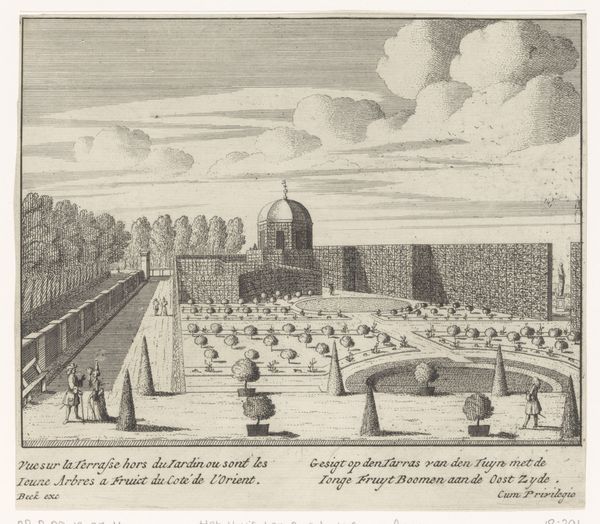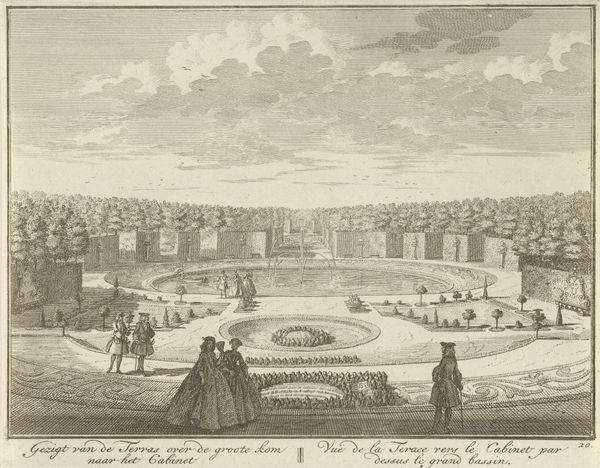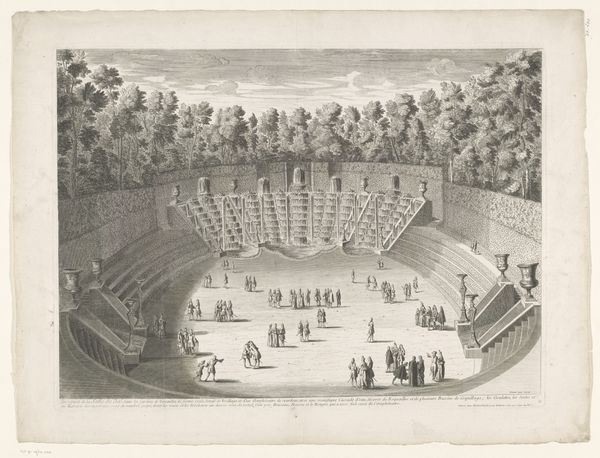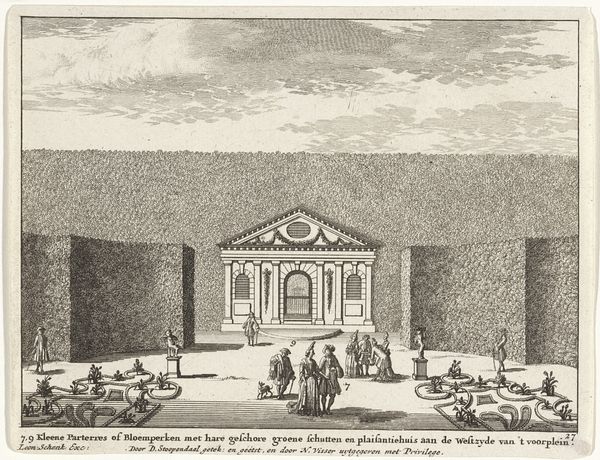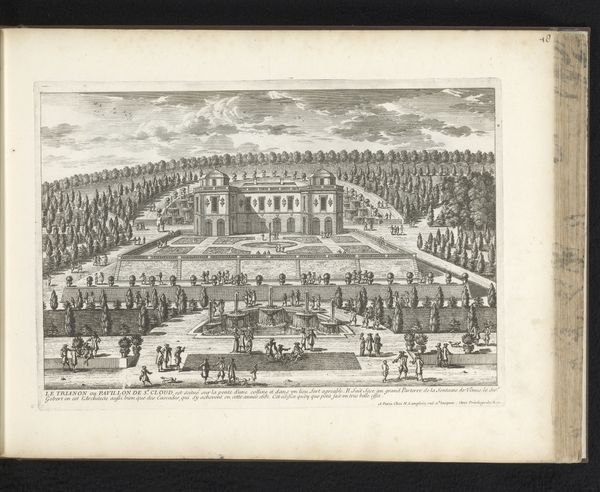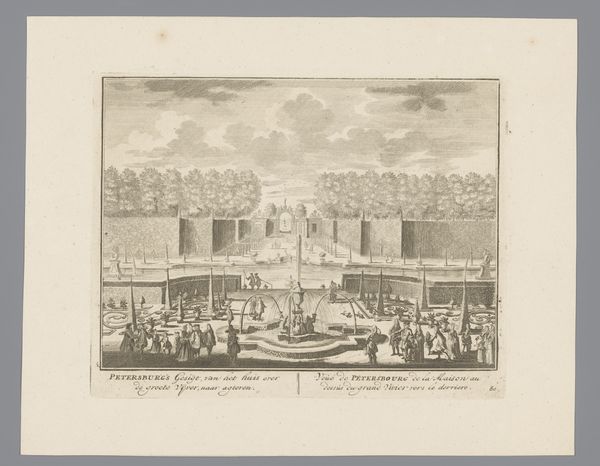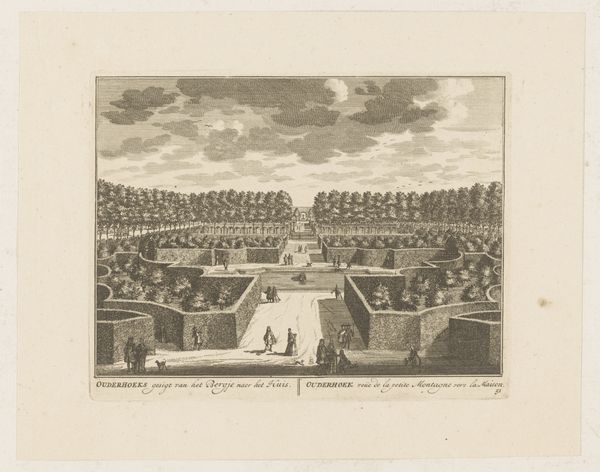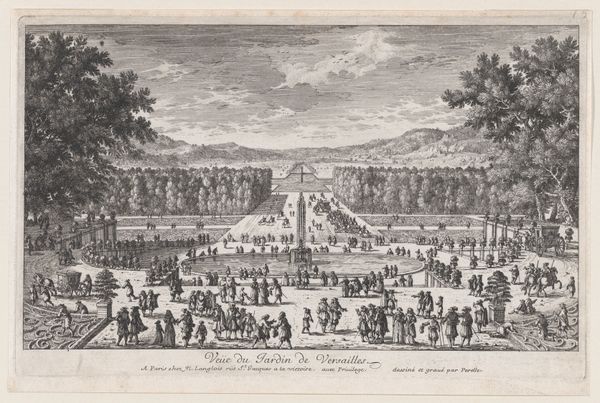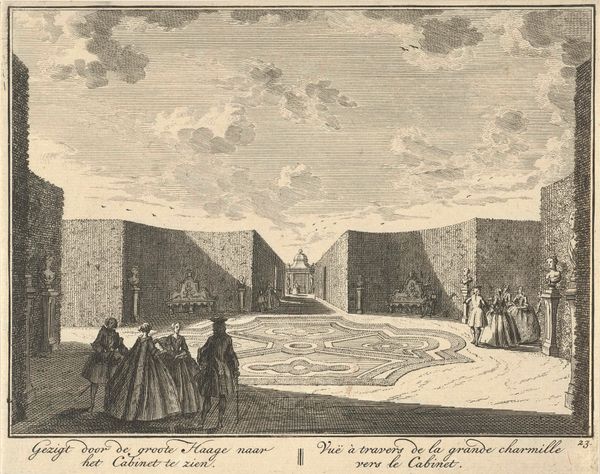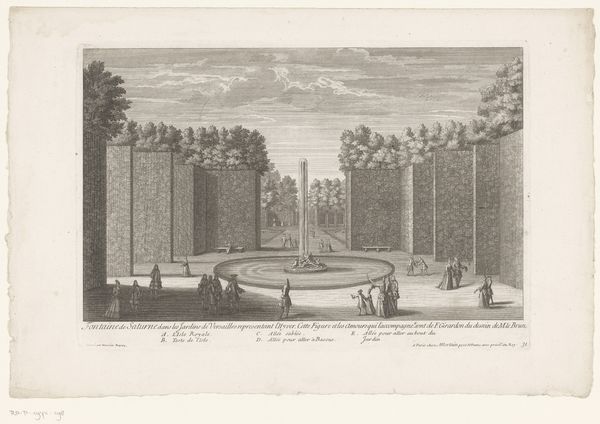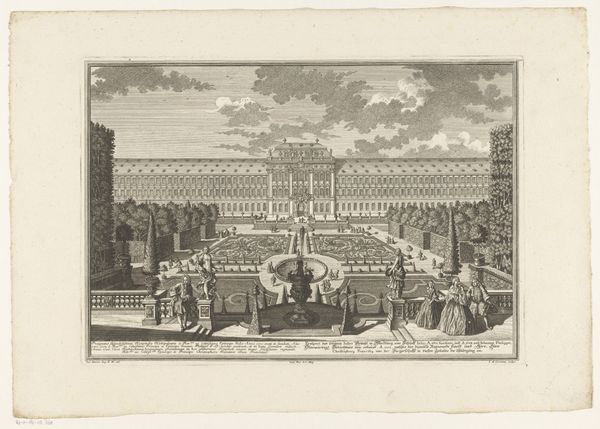
Dimensions: height 161 mm, width 202 mm
Copyright: Rijks Museum: Open Domain
Editor: Here we have Daniël Stopendaal’s “View of the Garden and Pond of the Driemond Estate,” an etching from 1790. The composition feels very controlled, almost sterile. How do you interpret this work? Curator: The controlled nature reflects the values of the elite at the time. Consider how landscape design became a powerful tool for expressing dominance over nature and, by extension, social hierarchies. Think about the labour that went into creating and maintaining such a space, the access and privilege embedded within it. Does the scene speak to ideas about power, class, or control? Editor: That makes me think about the figures within the landscape; they seem almost incidental, just placed within this scene, not actually part of the overall image. Curator: Precisely. And that’s something we should interrogate further. Who are these figures? What are they doing? The fishing, the strolling... It speaks to leisure and wealth. How does it speak to gender roles of the time? Consider the potential audience for this print: what would they understand from this representation of leisure and cultivated nature? Editor: So the print isn't just showing us a pretty garden; it's reinforcing societal structures and norms. Curator: Exactly. By understanding the context – the social, political, and economic landscape of the late 18th century – we can begin to unpack the complex messages embedded in what at first glance seems like a simple depiction of a garden. It encourages us to be critical of what we see and to think about who is included and excluded in the narrative. Editor: This makes me appreciate how much historical context can inform an understanding of art. Curator: And hopefully it will also remind you to continue questioning those contexts too!
Comments
No comments
Be the first to comment and join the conversation on the ultimate creative platform.

